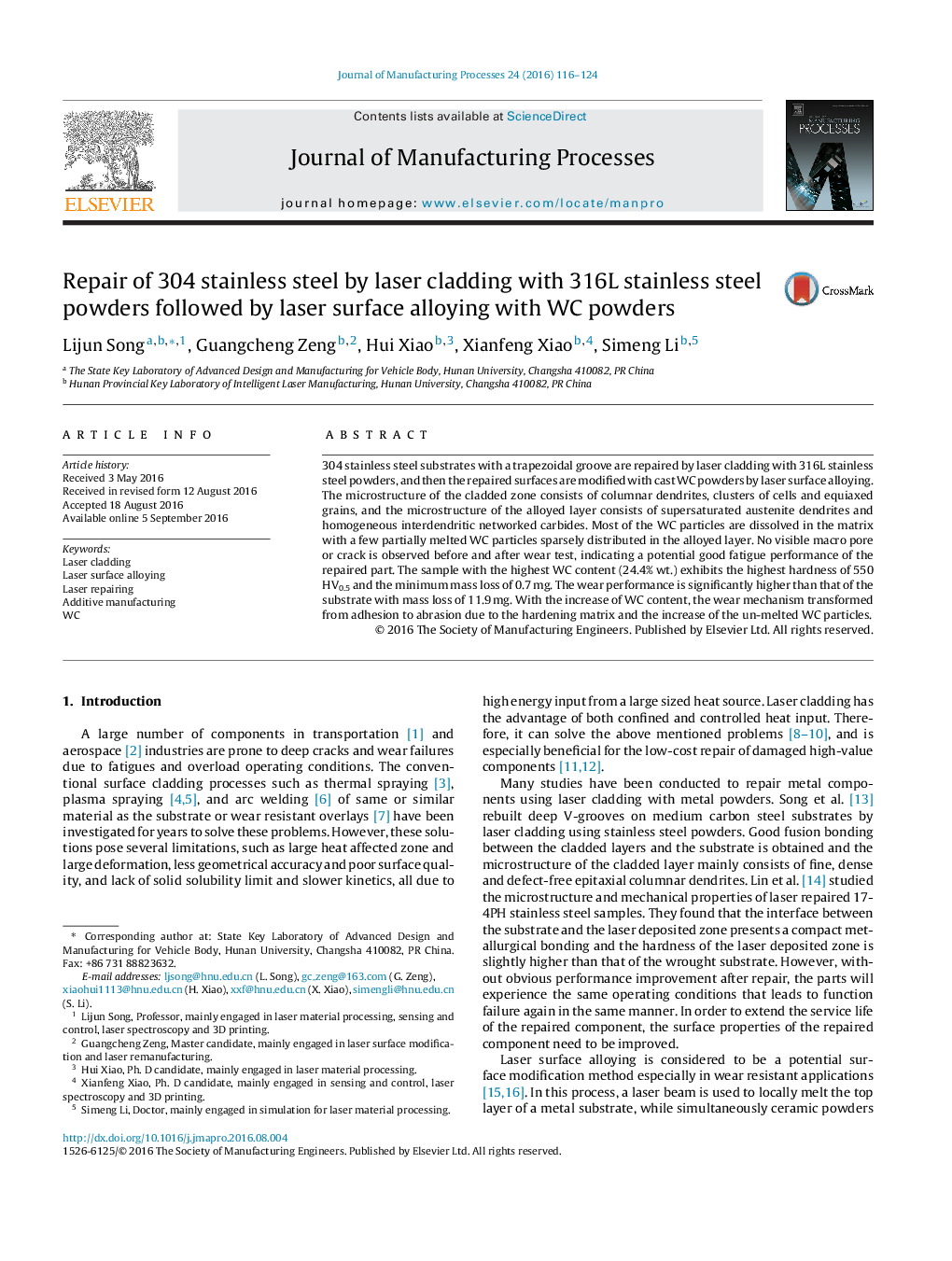| Article ID | Journal | Published Year | Pages | File Type |
|---|---|---|---|---|
| 6481502 | Journal of Manufacturing Processes | 2016 | 9 Pages |
304 stainless steel substrates with a trapezoidal groove are repaired by laser cladding with 316L stainless steel powders, and then the repaired surfaces are modified with cast WC powders by laser surface alloying. The microstructure of the cladded zone consists of columnar dendrites, clusters of cells and equiaxed grains, and the microstructure of the alloyed layer consists of supersaturated austenite dendrites and homogeneous interdendritic networked carbides. Most of the WC particles are dissolved in the matrix with a few partially melted WC particles sparsely distributed in the alloyed layer. No visible macro pore or crack is observed before and after wear test, indicating a potential good fatigue performance of the repaired part. The sample with the highest WC content (24.4% wt.) exhibits the highest hardness of 550 HV0.5 and the minimum mass loss of 0.7Â mg. The wear performance is significantly higher than that of the substrate with mass loss of 11.9Â mg. With the increase of WC content, the wear mechanism transformed from adhesion to abrasion due to the hardening matrix and the increase of the un-melted WC particles.
